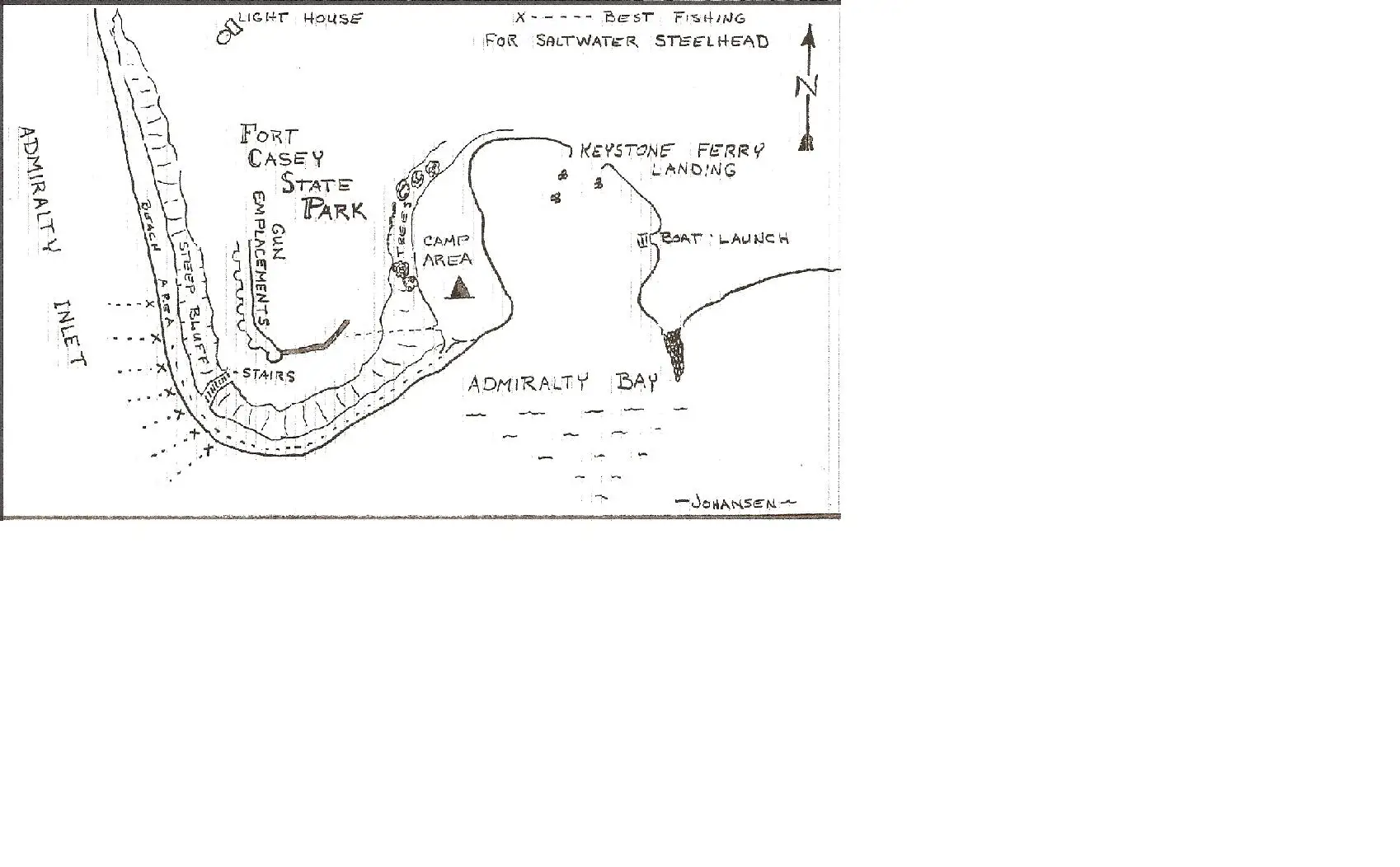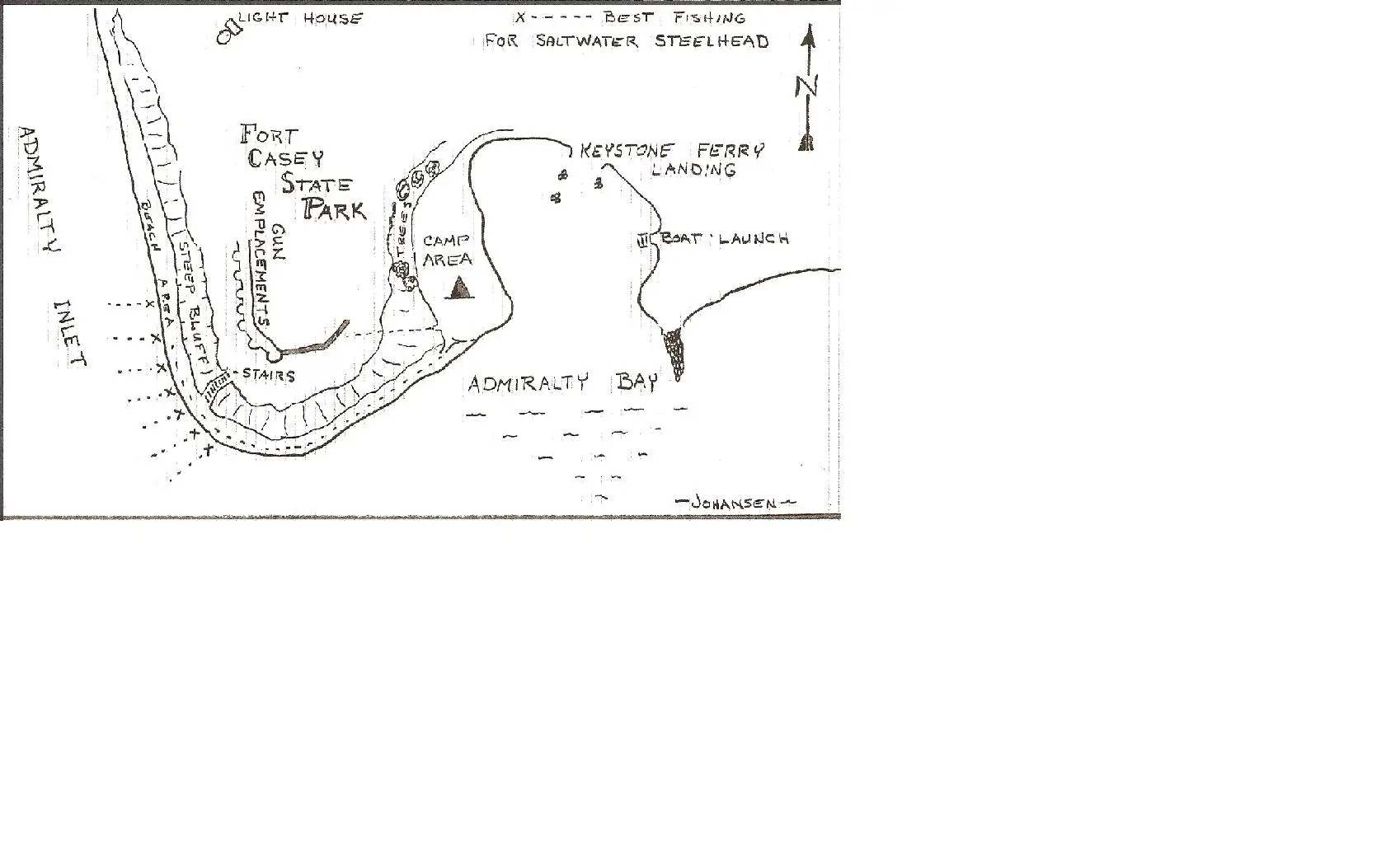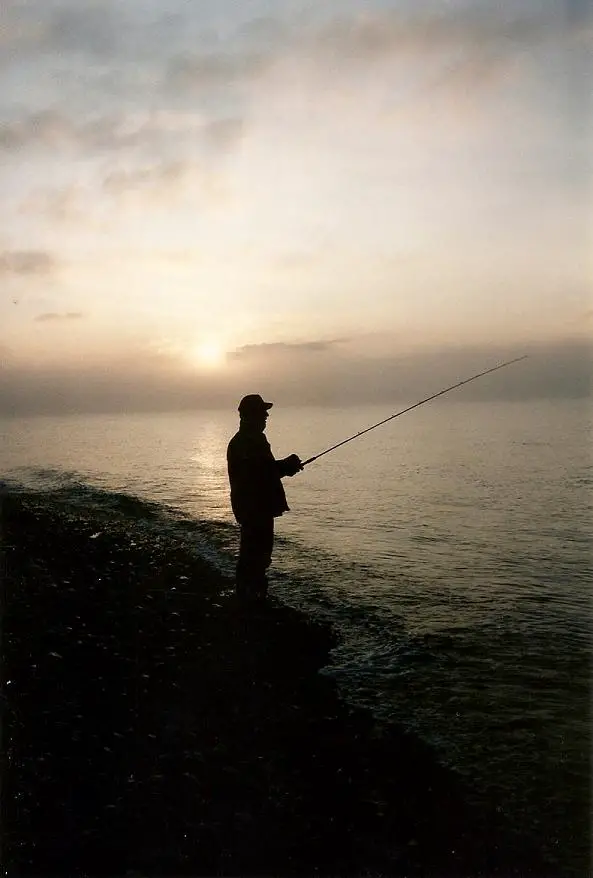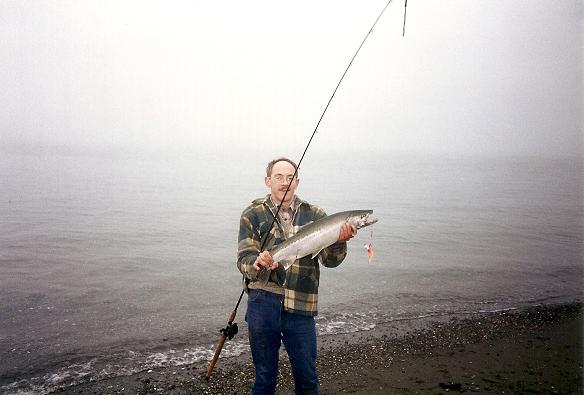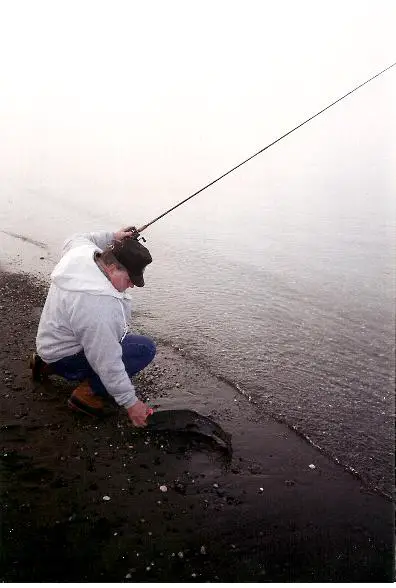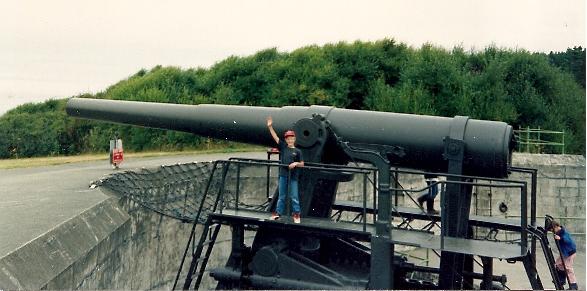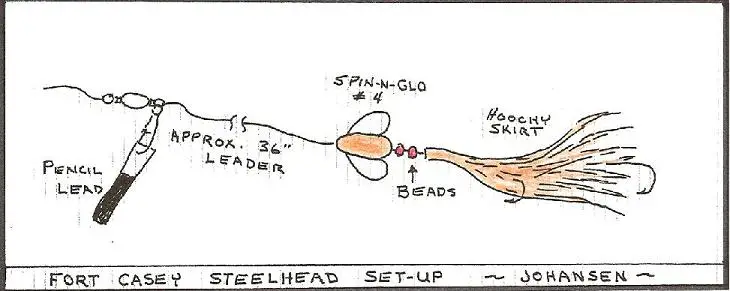Search
Latest Articles
Saltwater Steel
by Bob Johansen, November 12, 2007
WHEN THE RIVERS ARE OUT OF SHAPE, THE WEST SIDE OF WASHINGTON STATE'S WHIDBEY ISLAND STILL OFFERS STEELHEAD ANGLERS AN OPPORTUNITY TO CATCH A MINT BRIGHT WINTER STEELHEAD.
Northwest steelhead anglers are confronted with more and more challenges in their quest for the beautiful, highly prized winter steelhead. The rivers are often out of shape -- too high and
dirty or too low and clear and in many rivers the fish numbers are decimated by Tribal nets on their upstream spawning journey. Add to these problems, the numerous closures and restrictions imposed to protect the dwindling numbers of fish, and you have some anglers starting to look else where for their piscatorial pleasures.
Before you hang up your steelhead rod and give up, or take off for some distant fishing destination, there is one way to avoid these problems and try something new at the same time -- surf casting for steelhead off the S.W. shoreline of Washington's Fort Casey State Park. Although Whidbey Island's Bush point and Lagoon Point get most of the surfcasting publicity, access there can be quite limited for the bank fisherman.
For the shoreline angler, I think Washington's Fort Casey State Park is a much better option. Excellent saltwater steel heading opportunities can be found along its two miles of public beach. Shoulder-to-shoulder fishing, sometimes called, "combat fishing," is very unlikely
in the foreseeable future at this historic old fort.
Surf casting for steelhead is a unique experience for the average Northwest steelheader. While there are a lot of similarities to river fishing there are some differences that the first time salt-chuck steelheader should be aware of. The biggest difference is the enticement or lure. Bait, like cured cluster eggs or sand shrimp is seldom, if ever used. Neither is the standard drift rig or plugs. Spoons and spinners are tried at times but usually only is desperation when the lure of choice fails to draw strikes.
By far the most popular set-up is a squid skirt or "Hoochy" and a winged bobber, usuallya Spin-N-Glo. The most popular size for the Spin-N-Glo is the number four. The smaller number six is also sometimes used. Good colors for the winged bobbers include rocket red, pink
fluorescent, chartreuse, and a flame-chartreuse combination. I met one successful saltwater steelheader that adds a little custom paintwork to his bobbers. The "Hoochy" skirts are also bright colors with red, pink and orange being the most popular choices.
To make your own "Fort Casey" saltwater steelhead set-ups -- start with a double hook salmon rig with 2/0 or 3/0 hooks. Make sure they are "sticky" sharp. Hooks may be barbed or barbless. Slide a bead down the leader and follow it with a hoochy skirt. Seat the bead and
hoochy on the upper hook. Slide two more beads down the leader and follow them with a Spin-N-Glo. The addition of scent to the lure probably increases the number of strikes. Paste scents, like Smelly jelly will stay on the lures longer than the oils.
A beautiful Fort Casey steelhead – Note the lure
The leader should be about 36 inches long. Some anglers use a little longer leader -- some trim theirs a little shorter. I lean towards the shorter lengths for ease of casting and the fact that I don't think the lead weights will spook the steelies. Use enough weight to cast your
lure out and settle it to the bottom. The weight should be bumping the bottom as you slowly reel it in. Be sure to work your lure all the way back before thinking about the next cast. Saltwater steelhead will often hit within sight in the shallow, gin-clear water.
The type of weight or lead used is just a personal preference. Most anglers probably use pencil lead with surgical tubing. Others, however use Slinkys, barrel sinkers and the keel type sinkers. All will work well. The bottom is quite forgiving for the most part and only an
occasional rig is lost due to hangups. I was told by one of the "Fort Casey regulars" however, that the northern section of this beach has more and larger rocks that quite often grabs and refuses to let go of terminal tackle.
Standard steelhead rods, both casting and spinning will get the job done at Fort Casey. Long casts are not necessary for surf fishing. If you can cast well enough for river fishing your casts will be long enough. Reels should have a smooth drag system and a fairly large line
capacity. Use quality 10 or 12 pound test. Saltwater steelies are fresh and strong -- and when hooked they seem to develop a strong urge to return to the ocean. A couple advantages over river fishing however, is that the fish don't have any snags to tangle in, they can't charge down over a fast riffle and they are easy to follow along the shoreline.
A few fishermen bring landing nets. I personally don't think they are worth the hassle of lugging around or even needed on the gently sloping beach. Be sure that you do not use a gaff -- it is unlawful to gaff a steelhead in any saltwater area.
An angler lands a steelhead on Fort Casey’s gently sloping beach
Hip boots or chest high waders are not necessary to fish from the beach. Boots will however, insure dry, comfortable feet on rainy days or when a wave from a passing ship or barge catches you by surprise. Be sure to bring your rain gear. You may not need it but it is
much better to have it and not need it than to need it and not have it. December and January are a couple of the best months for this fishery and most Northwest anglers know they should be prepared for most any kind of weather during the winter season.
Camping steelheaders can take advantage of the excellent camping facilities at Fort Casey State Park. During the winter months, a warm camper, motor home or camp trailer with a good heater is the best way to camp. Save the tent camping for summer or early fall. The
camping area is located on the beach within a short hike of the best surf casting section of the beach. (See map.) The park has 35 standard camp sites, each with picnic table and campfire site. The modern restrooms are heated and provide hot showers. If you enjoy a nice camp fire during the evenings (When it isn't raining) bring some dry wood to burn in the camp site fire pits. Driftwood is usually plentiful during the winter but park rules now prohibit gathering it for campfire wood.
So, the next time your favorite rivers are out of shape or if you just want to try surf casting for winter steelhead, head for Fort Casey. If the fishing gets slow or if you have already limited, Old Fort Casey is a great place to explore. It was one of the coast artillery posts
established during the late 1890's for the defense of Puget Sound. The main strength of the fort was the seven 10 inch guns mounted on disappearing carriages. After each round was fired, they dropped down behind thick concrete parapets. Two of the 10 inch guns and two 3 inch rapid fire guns are now on display at the park.
Jason Johansen waves from a Fort Casey 10 inch gun
Fort Casey State Park is easy to find. Any Washington State map will show that Whidbey Island can be reached from the south via a short ferry ride from the town of Mukilteo, located just southwest of Everett, to Clinton, located on the southeast shore of Whidbey Island.
Traveling to Fort Casey from the northern part of the state, exit I-5 at Burlington and follow Highway #20 west to Whidbey Island and then south to Fort Casey State Park. Anglers living on the west side of Puget Sound can catch the ferry at Port Townsend to the Keystone ferry landing next door to Fort Casey State Park.
Trout fishing, including steelhead is open year around in this area. This is a catch and release fishery, except up to two hatchery steelhead may be retained. Hatchery steelhead can be identified by a missing adipose or ventral fin. December and January are the best months to fish this area for hatchery steelhead but fair to good fishing extends through February for the native fish.
A valid Washington State saltwater fishing license and a current steelhead catch record (punch card) is required to fish for steelhead in marine areas. Fort Casey is in Marine Area #9.
Visiting anglers can find all normal facilities such as lodging, food, gas, fishing tackle and licenses in nearby town of Oak Harbor. Be sure to bring a camera. This beautiful area of saltwater beach and the old fort provides some excellent photo opportunities.
Fort Casey Map and Steelhead set-up by Bob Johansen
An angler casts for steelhead at Fort Casey in the early morning fog.
By Bob Johansen re-published Nov 21, 2011
